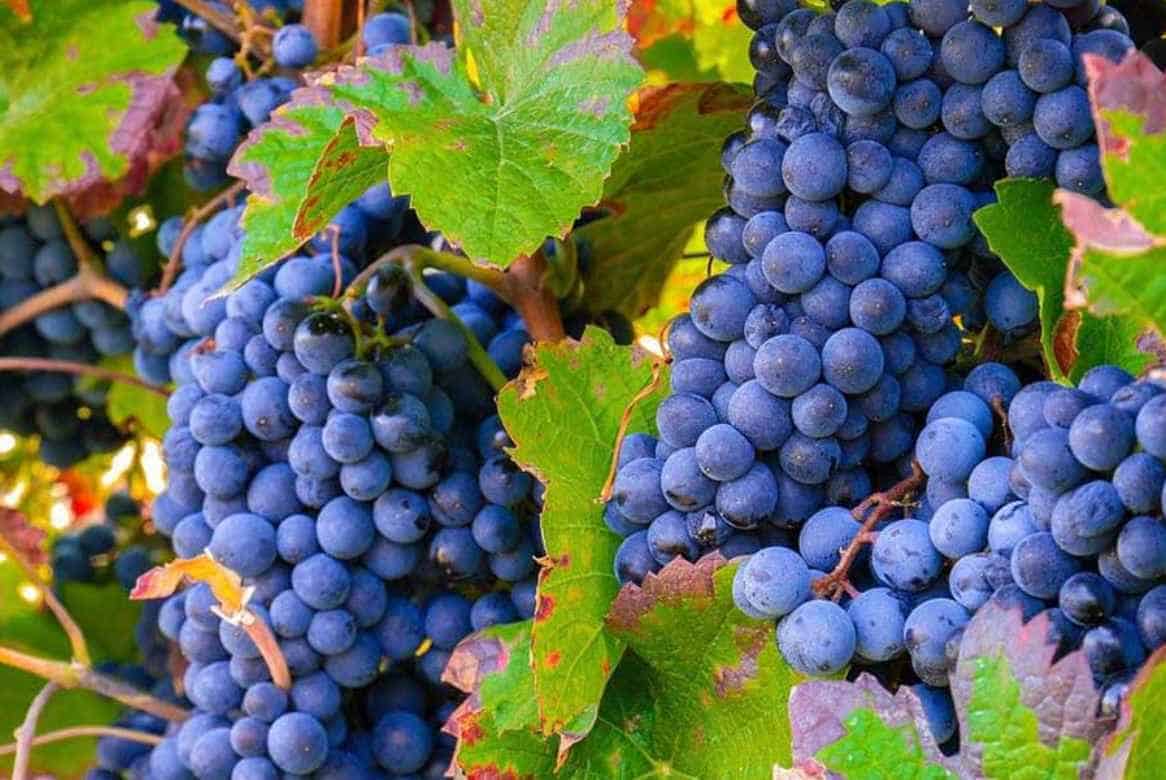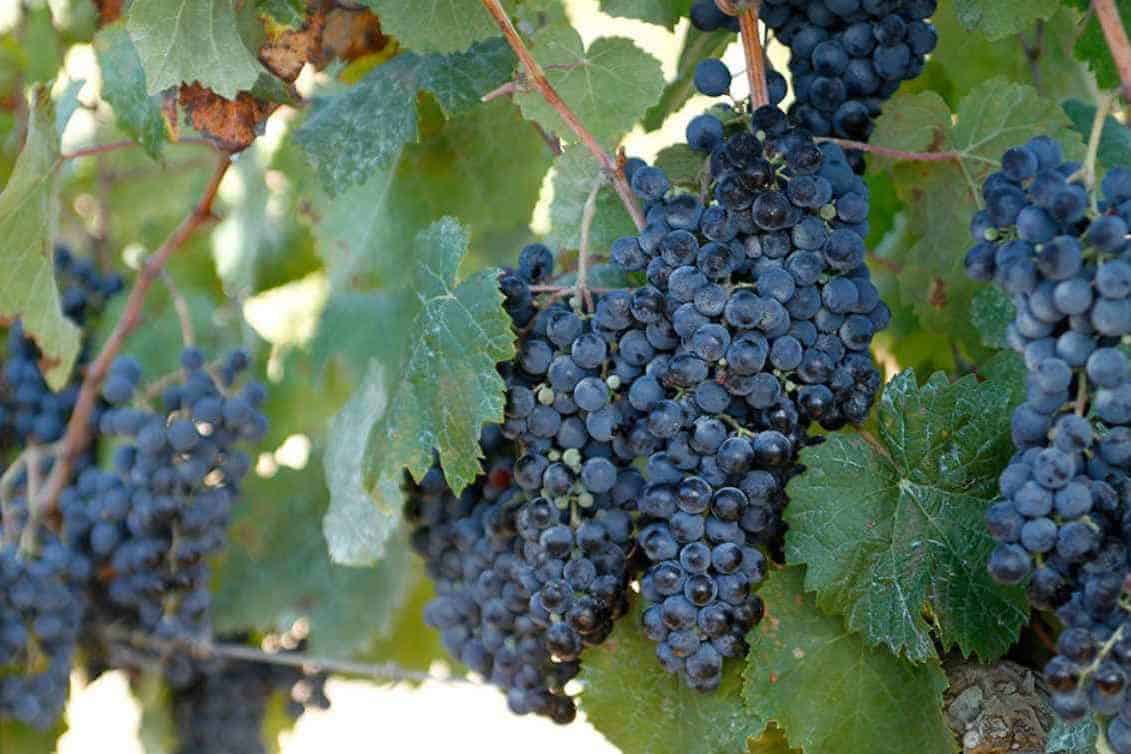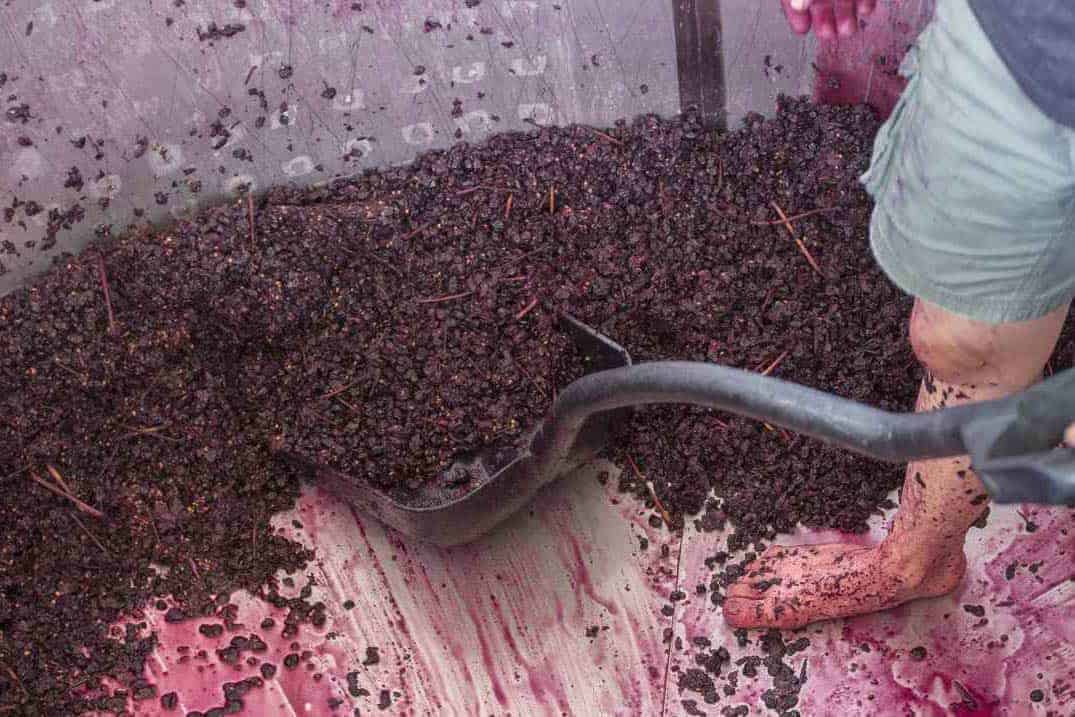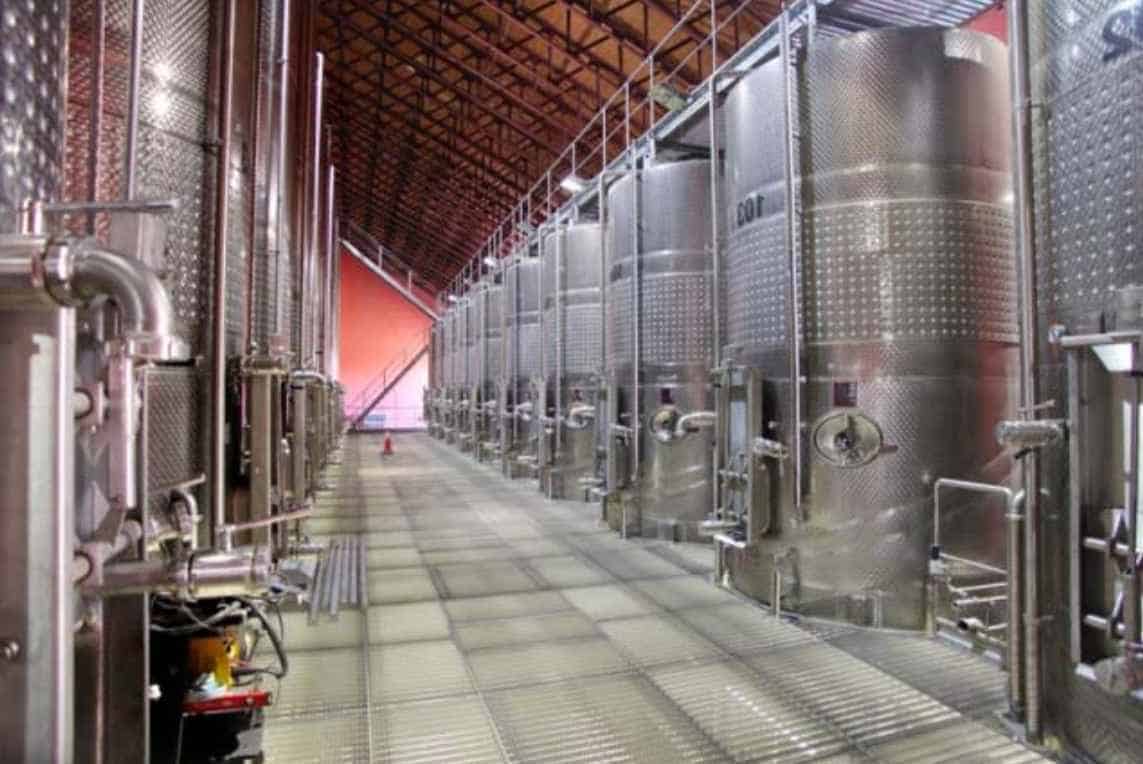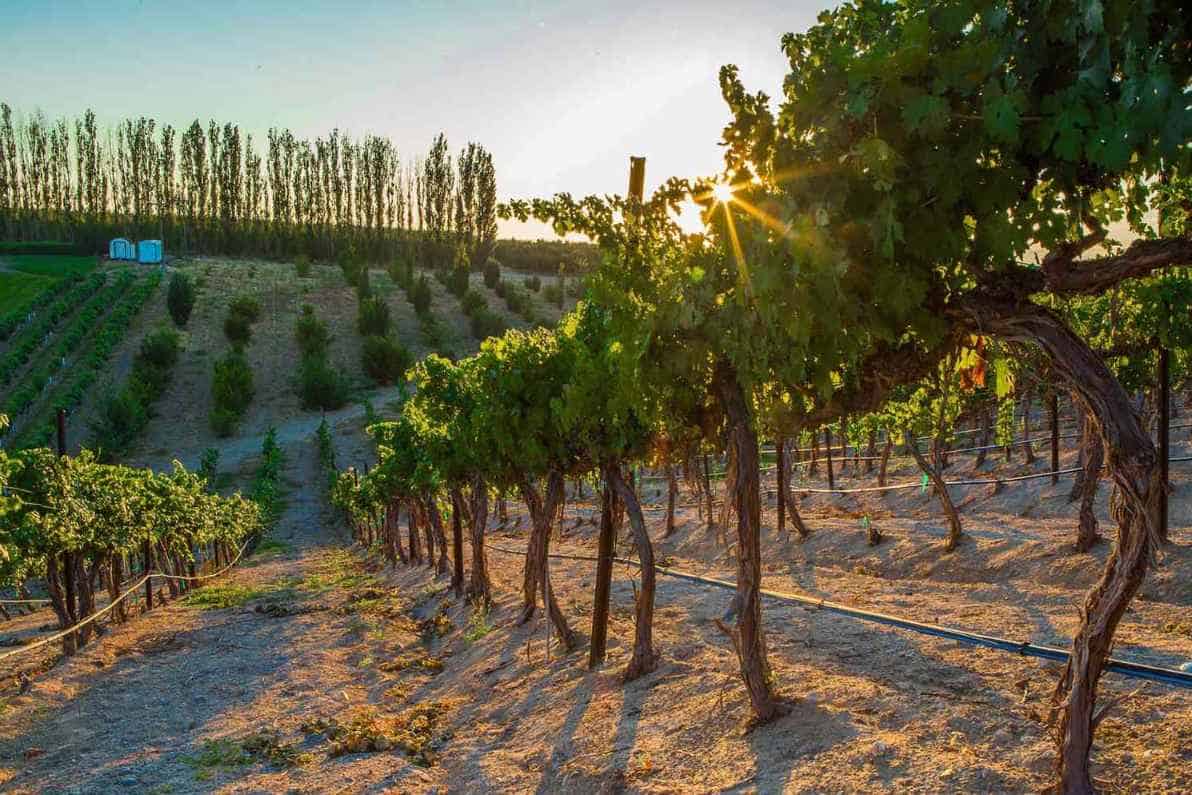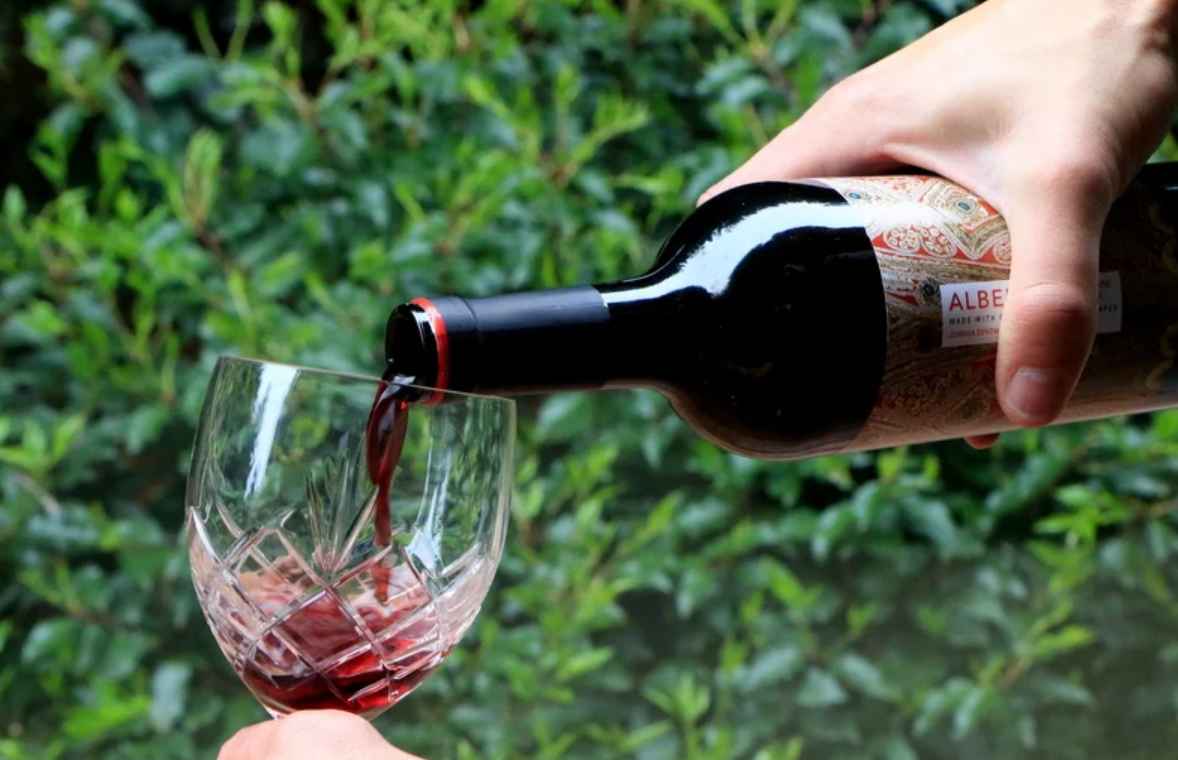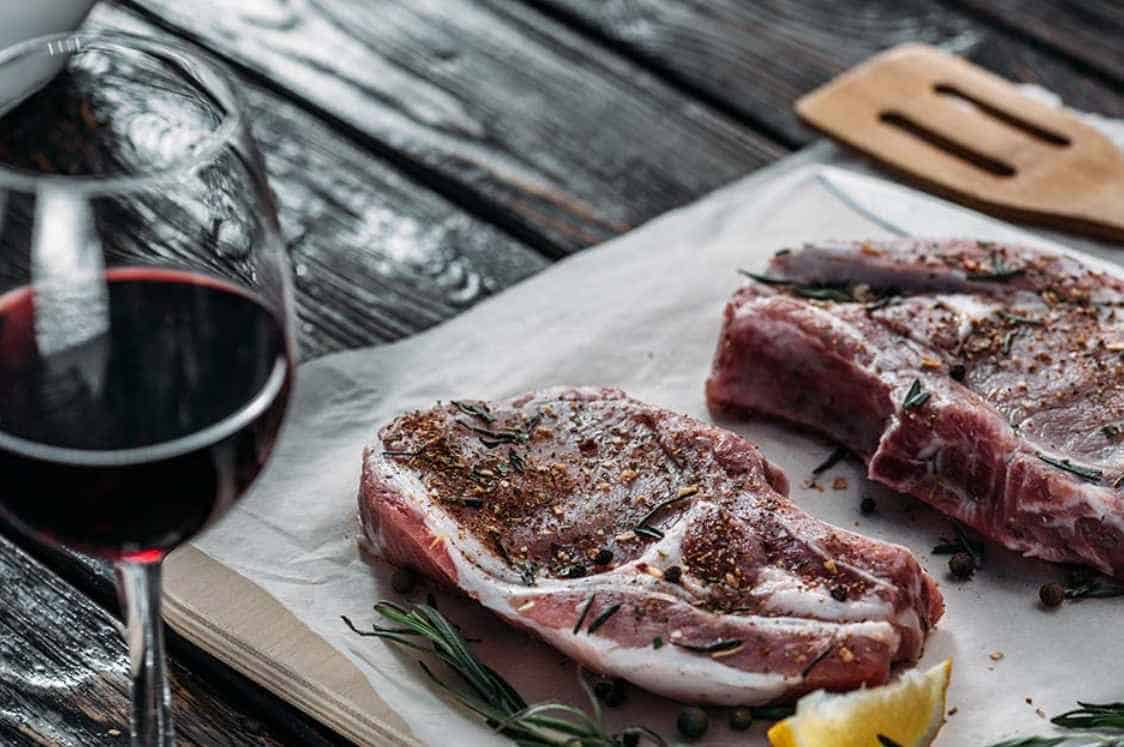If you’ve caught yourself falling head over heels for red wines, there is a big chance you are looking to take your wine-tasting venture up a notch. If the same old vintage is not pleasing your thirst anymore; a variety of new flavors await. Let’s begin our journey by finding what Monastrell wine has in store for us.
| Origin | Spain |
| Commonly made with | Monastrell Grape |
| Color | Red |
| Taste | Fruity
Earthy |
| Texture | Full-bodied |
| Sugar Content (per liter) | 5 g/L |
| ABV | 13% to 15% ABV |
| Biggest Producers | Spain, France, and USA |
What Is Monastrell?
Due to their fantastic flavor and flexible pairing with various dishes, Monastrell or Mourvèdre vintages have become more famous. Further, these wine grapes are known for notably thriving in hot and dry climates, making them the ideal choice for many wine regions.
Monastrell wines are highly praised for their intense pigments, bold tannins, and pleasant fruity aroma. Blending time in oak barrels with this already fervent flavor profile allows the wine to expand into a more complex aroma.
History of Monastrell Wine
The Monastrell is a grape wine farmed in the eastern Hinder Sea as early as the 5th century BC. Yet, it was only in the medieval days that it became firmly rooted in Spain’s Jumilla, Yecla, and Alicante regions.
During the 18th and 19th centuries, Monastrell had immense demand and was exported globally—notably to France, known as Mourvèdre.
However, during the 20th century, Monastrell wine grapes plunged in favor due to phylloxera, economic strain, and growing tastes.
Still, in recent times there has been an upsurge in avidity for this wine. Many wineries are devoted to producing this wine vintage after vintage.
Monastrell Wine Characteristics
| Flavor Notes | Taste | Appearance | Aromas |
| · Dark Fruits (Blackberry, black cherry, plum, and fig)
· Subtle Earthy notes (Leather, tobacco, and herbs) · Hints pf Minerality |
· Full-bodied
· Rich · High tannins · Acidic |
· Deep Red (Young)
· Opaque Red with Purple Undertone (Old) |
· Fruit
· Spice · Hint of Earthy Notes |
Appearance of Monastrell
Monastrell wines feature a deep, dark red hue with a purple undertone. This color stems from the grapes’ robust skins and makes them stand out against other varieties of reds. These pigments are integral in granting this wine it’s unique coloring.
Monastrell wines are noted for their bold hue, which is very opaque and striking than many reds. The color of the wine gives insight into its age and flavor profile. Younger vintage typically possess a more vivid hue, while those aged longer may have a deeper color.
Flavor and Texture of Monastrell
Monastrell wine is full-bodied and features fruit and spice aromas with a hint of earthy notes. This wine is a pleasant blend of sweet and vibrant red and black fruit flavors. These savory tastes are further enhanced by subtle hints of earthy or mineral-like notes providing perfect depth.
This Spanish wine boasts a full-bodied texture and robust tannins that linger long after the sip is gone. With earthy and intense notes, these unique vintages offer an intricate flavor venture like no other—one that will deepen with time!
Most Monastrell wines were synonymous with bold flavor and tannins not long ago. Now more wineries are seizing the chance to craft lighter yet equally tasty choices. Many offer fruit-forward aromas and a milder profile that is easy on the palate.
How is Monastrell Wine Made?
Traditional Method
For centuries, the Jumilla region of Spain has been crafting Monastrell wine using a traditional process that includes several steps.
The first one is to ensure optimal ripeness and high sugar levels. The Monastrell grapes are hand-picked during late September or early October.
Traditionally, they are hand-picked by the pickers. Methods like a wooden press or stomping with feet are used for crushing the grapes.
The wort is moved to open-top concrete or clay vessels, allowing for natural yeast activity. The winery must monitor this process over several weeks to ensure it goes correctly. Since the wort is exposed to the air, it can be a ground for bacteria.
Lastly, the wine is aged in little oak barrels or clay amphorae for several months to years, relying on its style.
Modern Method
The modern approach to crafting Monastrell wine necessitates using cutting-edge winemaking practices and technology and a greater focus on reliability and efficacy.
The Monastrell grapes are now reaped by machine, using a modern kit to ensure the grapes are picked at the optimal time and sorted quickly and efficiently. Modern equipment, such as an automatic crusher, is also present for pressing use to extract grape juice.
The grape juice is then placed in stainless steel tanks, where it ferments with retail yeasts. These strains can be selected for specific flavor and aroma profiles. Modern winery control systems closely monitor the process to ensure even and optimal results.
Although standard oak aging is still present, many wineries may use various modern methods. Such as micro-oxygenation of oak chips to achieve a specific flavor profile.
In conclusion, there is a stark contrast between the classic and modern ways of making Monastrell. One thing remains clear: the end product is nothing short of delicious!
Different Monastrell Wine Regions
Now, let’s explore the vast acres of other Monastrell Wine Regions.
Spain (Monastrell)
In Spain, Monastrell was the fourth most planted red wine grape variety, with 43,049 hectares in 2015. Sadly, this number has been dropping over time with an increase in global wine grapes. Despite this decrease in numbers, however, it is still widely used throughout eastern Spanish wine regions such as:
- Jumilla: This DOP features extensive valleys and plateaus within a mountainous landscape. It’s the transition zone between the Mediterranean coast region and Castile-La Mancha’s elevated plateau, making vineyard elevations range from 400 to 800 meters.
- Yecla: Yecla DOP’s vineyards in the mesmerizing transition of La Mancha and the captivating Mediterranean reach up to 800 m above sea level. The soil consists of sandy topsoil with minimal organic matter but excellent lime-rich subsoil filled with carbonates.
- Alicante: Mostly, the soils here are formed of dark lime-bearing sedimentary rock with a quite sandy and virtually organic-matter-free blend.
France (Mourvèdre)
Bandol AOC is a highly esteemed wine of the Provence region. It’s sitting near Marseille and Cassis on the east coast. It’s where the most highly sought-after vintage comes from. The area of Côtes de Provence and Languedoc-Roussillon also produces Monastrell grapes, albeit it’s primarily for blends.
United States (Mataro)
Even though there are no official U.S. viticulture areas devoted to this particular type of vino, many wineries still craft wines using Monastrell grapes – such as:
- California
- Texas
- Washington
How to Drink Monastrell Wine
Serving Temperature
Monastrell wine should be served slightly below room temperature at a calming range of 60-65°F (15-18°C) for peak flavor. This will draw out its unique aroma and taste. Enjoy the ideal glass – every time!
Decanting and Aeration
Aerating red wine can be beneficial for an improved flavor and scent; however, not all bottles require this. The rule is the older the vintage, the more decanting can help. You can see this aeration guide if you are interested.
Glassware Recommendations
Select the proper glassware to partake in the peak of Monastrell’s flavors and aromas. These are our suggested glasses for serving this delicious wine:
- Red Wine Glass
- Burgundy Glass
- Zinfandel Glass
Food Pairings with Monastrell Wine
Monastrell wine is a robust red with delightful dark fruit, spice, and earth notes. For the optimal tasting experience, here are some food pairings that will highlight its beautiful complexity:
- Grilled Meats: Monastrell wine is a match made in heaven when paired with grilled meats – from steak to lamb chops and even sausages. Its robust tannins and flavors elegantly balance out the intense savory notes of your favorite dishes.
- Stews and Casseroles: Monastrell wine pairs wonderfully with savory, hearty dishes such as beef stew, chili con carne, and shepherd’s pie.
- Hard cheeses: Monastrell wine is the perfect pair to robust and nutty hard cheeses, such as cheddar and Pecorino Romano.
- Dark chocolate: The wine’s vibrant and spicy flavors shine through, providing balance to the chocolate.
Regarding Monastrell wine, bold and flavorful dishes are the ideal pairing. Its robust notes of fruit and tannin provide a unique depth that will complete your meal perfectly.
Monastrell Wine You Should Try
| Brand | Bodegas El Nido | Enrique Mendoza |
Casa Castillo |
| Taste | Dry | Dry
Tannic |
Dry
Tannic |
| Texture | Medium-bodied | Medium-bodied | Medium-bodied |
| ABV | 16% | 14% | 15% |
| Best Serve with | Meat and Paste | Lamb and Deer | Meat and Pasta |
| Average Price | $43.99 | $29.17 | $84.95 |
1. Bodegas El Nido Clio
This 2020 vintage is among the most well-reviewed vintage featuring a 4.5 rating in Vivino. The color is a vivid cherry hue, while the aroma features coffee and earthy herbs. On the palate, it offers full-bodied, potent tannins and excellent structure.
2. Enrique Mendoza Estrecho Monastrell
A vivid cherry color, this wine’s scent is mineral-driven and full of spice. Its palate has an elegant intricacy; ripe fruit undertones are paired with tonic acidity for a level yet flavorful finish that lingers long on the tongue.
3. Casa Castillo Pie Franco
An aroma of cocoa, berries, and raw oak beckon you to take a sip. Rich and full-bodied, with subtle notes of herbs and fruits, it will tantalize your taste buds. On the finish, it is tight yet rugged with lightly abrasive tannins that linger on the aftertaste.
Conclusion
Monastrell wine is a glorious red that features unique complex flavors. With this guide, you can partake in its robust notes to the fullest! Try one of these wines today and enjoy what they have to offer. Happy sipping!
